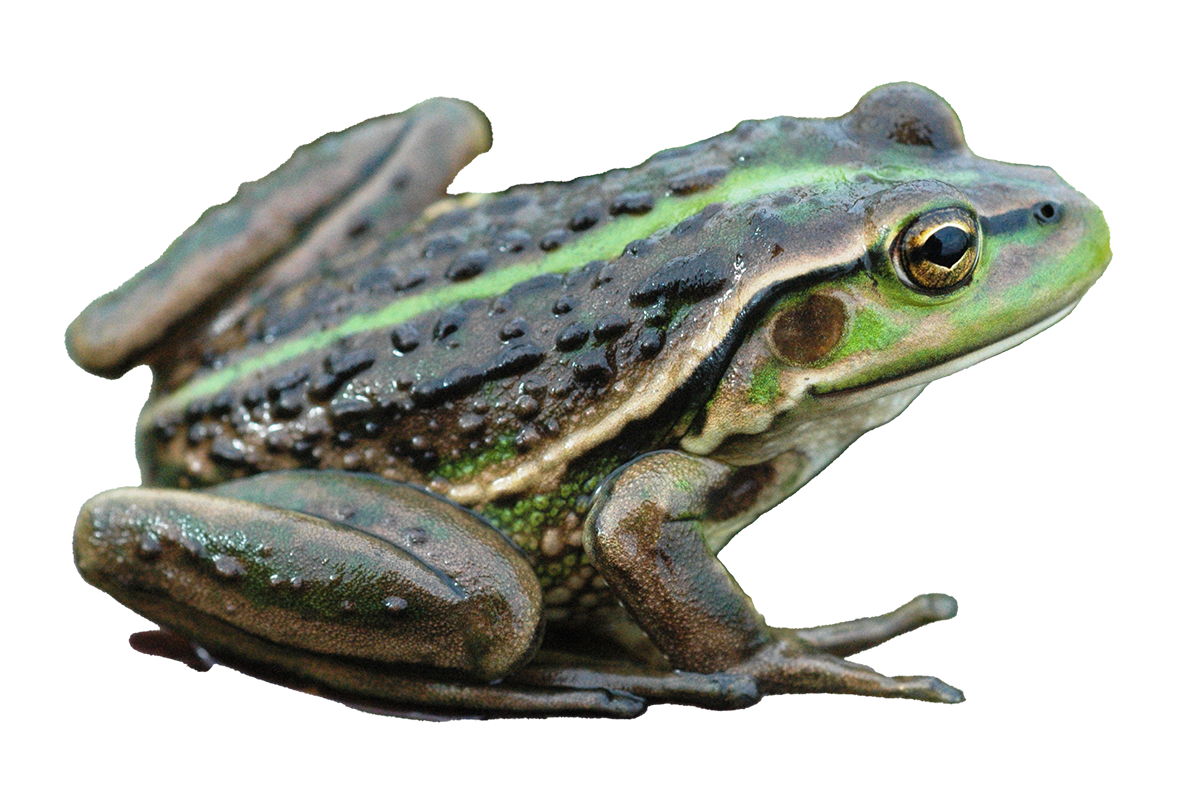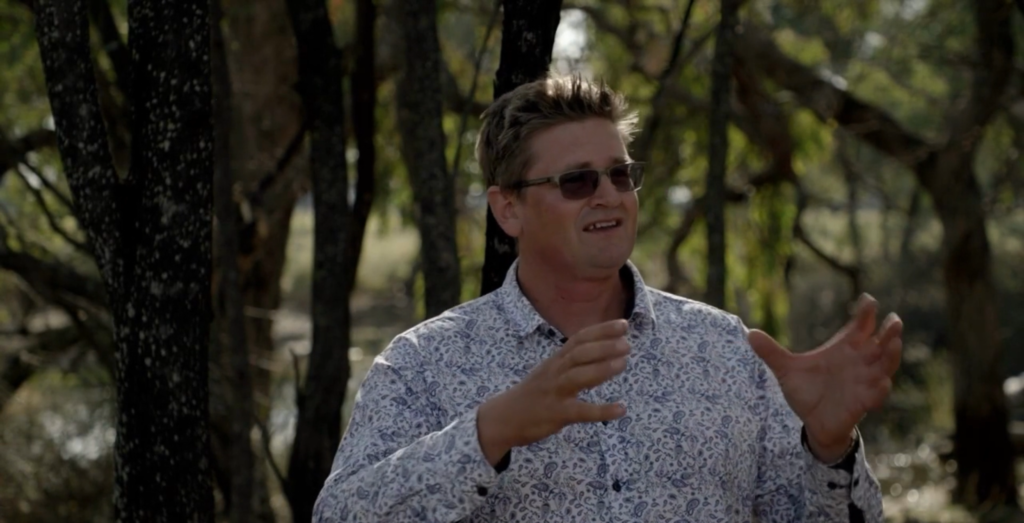Standing amongst a woodland of Black Boxes on his property in Yando, northern Victoria, in what was once the bottom of a Creek line, Bradley Haw talks to Elaine Bayes and Damien Cook about his journey to restore wetlands on his property.
Bradley is a participating landholder the Wetland Revival Trust project “Boosting drought resilience in the Lower Loddon Landscape: If you look after nature, nature can look after you”.
This project received funding from the Australian Government’s Future Drought Fund, through the Drought Resilient Soils and Landscapes grants program. The project aims to enhance drought resilience on farms by restoring wetlands along the lower Loddon River floodplain. This project is trailing and monitoring the impact of ecological restoration practices at a landscape scale that will restore and maintain natural capital by re-instating more natural hydrology, increasing soil carbon and moisture holding capacity, restoring native vegetation cover and health, and providing biodiversity refuges.
WRT is working with Bradley through this project to restore the water regime of his Black Box wetland, increase ground cover and create a wildlife drought refuge.
A degraded landscape
The original creek line on Bradley’s property was relocated in the 1970s, disrupting the natural hydrology to the floodplain.
“In the seventies it was shifted a couple hundred meters to the east of us to, to keep it straight and all this country was taken out of the flood plain. And I’ve returned it back in and been trying to return it back to how it was naturally.”
When Bradley got the block, it was degraded from overgrazing, with native grasses and the understory depleted. He recalls:
When we first got this, it had a history of being overgrazed and just set stock constantly. And so there was very little native grasses in here and there was no understory. It was just Black Box trees. And it was a block where everybody came to get their firewood. So lots and lots of timber has been taken out of here for firewood.”
A Black Box Woodland Oasis
Bradley’s vision for the property is to restore it to as close as possible to its natural state.
“I want it to be as natural as possible with as many as the plants that would’ve naturally occurred in a Black Box woodland as absolutely possible, so it’s really diverse with species and biodiversity wise. I want it to be really diverse because there’s not many patches of Black Box left with good understory and still the upper story and I want it to be like a little oasis for animals and things to come and hang out. I just want to have a healthy eco system, and as healthy as we possibly can.”
To encourage more biodiversity, including for the threatened Grey-crowned Babblers on his property, Bradley plants more understory plants each year, practices control grazing with his sheep which has encouraged native grasses to come back, and returned hollow logs back to the floor of the Black Box wetland.
“We’ve actually put close to 400 tonne of Black Box hollows and things back in here because it was missing a lot of its hollow logs. We go for walks in the Leaghur park or a patch of Black Box and see if there’s plants there that we could have had once and if we haven’t got it, I’ll grow it and stick a few in or throw a bit of seed down.”
Creating a drought resilient microclimate
Bradley has seen a difference in the moisture retention and health of the soil on his property from the restoration work he has done to date.
“I’ve even noticed that once we’ve got more understory and we’ve got more grasses and things now, that the dew points have actually changed in the block. I can get quite wet walking through the grass in the morning with dew, but my next-door neighbours haven’t got dew at all.
I’m starting to start up my own little water cycle and changing the microclimate on our own block and that excites me.
You don’t need as much rain anymore. I see all my neighbours complaining it hasn’t rained or it’s rained too much, like ‘we’ve got an inch and it’s running off’. I haven’t had runoff off my farm for years.”
During the recent flooding event in October 2022, instead of water running off the land, and the soil soaked up the floodwaters.
“I had no water leave my farm. I had lots of water come onto it, but my paddocks soaked it all up and it’s just healthier.”
Irrigation alternative for a changing climate
Bradley grazes his 80 sheep on 30 acres of Old Man Saltbush paddock, that he has thickened up with native grasses and, and wattle, negating the need to irrigate his paddocks for pasture.
“It’s an irrigation farm, but I don’t irrigate anything anymore, and I’m running just as many sheep or more sheep than most people that are irrigating pastures. The climate’s changing and I realised that we couldn’t rely on irrigation even though I’ve got irrigation water and I own a little bit of water, I prefer to tip it out into spots like this and give my trees and things to drink instead of watering pasture for sheep.
I’ve planted native plants that are really high in protein and nutrients and things for the sheep and just move them around. I’ve got feed all the time and they do really, really well and there’s always habitat there for everything else apart from the sheep.
There’s a whole diversity of plants out there that are using water from different levels in the soil profile. I can stick my shovel into the soil pretty well full depth any time of the year. The soil’s just soft and pliable and healthy and you get the dew and a little shower of rain and you instantly get green. And I know in 12 months’ time how much feed I’m gonna have because like it’s already there.”
“It’s just healthier”
Bradley’s restoration journey so far shows the potential for restoration to not only increase biodiversity, but also build drought resilience in the face of climate change. Bradley hopes that his property will be an educational spot for people to look at the restoration work he has done and see the difference it has made.
This interview has been edited for length and clarity by Talia Jenkin.

This project received funding from the Australian Government’s Future Drought Fund.

Help us protect Wetlands in the Murray-Darling Basin
There’s not a moment to lose! Donate now to help us buy, protect and repair precious wetlands in the Murray-Darling Basin.
Donations over $2 are tax deductible as Wetland Revival Trust is a registered Deductible Gift Recipient (DGR).


